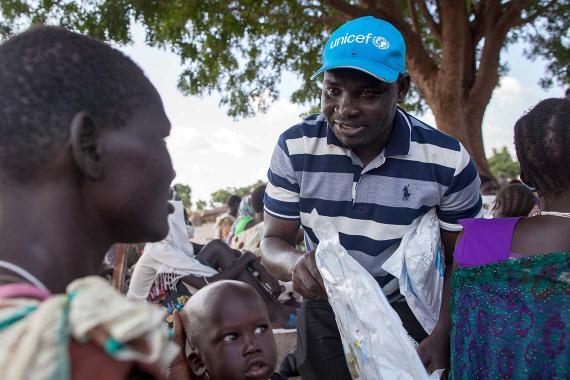WHO recommends two new insecticide-treated nets 2023

To combat malaria, more than 2 billion insecticide-treated nets (ITNs) have been supplied worldwide since 2005. All of these nets were treated with pyrethroids, a single kind of pesticide. Nevertheless, as mosquitoes in many regions are now resistant to pyrethroids, it is necessary to use nets coated with additional active substances to prevent malaria.
In 2017, the World Health Organization began recommending a new form of ITN that mixes pyrethroids with piperonyl-butoxide (PBO), a chemical that increases the efficacy of pyrethroids against mosquitoes that have developed resistance.
The guidelines issued today in the WHO Malaria Guidelines encompass two new kinds of ITNs including two active ingredients with distinct mechanisms of action:
The combination of a pyrethroid and a pyrrole insecticide in pyrethroid-chlorfenapyr nets enhances the net’s killing power.
Pyrethroid-pyriproxyfen nets combine an insect growth inhibitor with a pyrethroid (IGR). The IGR affects the development and reproduction of mosquitoes.

New suggestion about pyrethroid-chlorfenapyr versus pyrethroid-only mosquito nets
WHO issues a strong recommendation for the deployment of pyrethroid-chlorfenapyr ITNs as opposed to pyrethroid-only nets to prevent malaria in adults and children in regions where mosquitoes have developed pyrethroid resistance.
Compared to pyrethroid-only or pyrethroid-PBO nets, pyrethroid-chlorfenapyr ITNs should have a stronger lethal effect against pyrethroid-resistant malaria vectors and hence a greater impact against malaria, according to the suggestion.
New recommendation for pyrethroid-chlorfenapyr versus pyrethroid-PBO insecticide-treated nets
WHO recommends the use of pyrethroid-chlorfenapyr ITNs instead of pyrethroid-PBO nets to combat malaria in adults and children in regions with pyrethroid resistance.
The recommendation is conditional on the WHO Guidelines Review Group’s (GDG) assessment that the balance of favorable and negative effects probably favors pyrethroid-chlorfenapyr over pyrethroid-PBO nets. The advice is supported by evidence from a single trial conducted in Africa.
New advice about pyrethroid-pyriproxyfen nets in comparison to pyrethroid-only nets
WHO is recommending the use of pyrethroid-pyriproxyfen nets instead of pyrethroid-only nets to prevent malaria in adults and children in regions with pyrethroid resistance.
The recommendation is conditional due to the GDG’s concerns over the low cost-effectiveness of pyrethroid-pyriproxyfen nets in comparison to pyrethroid-only nets; the additional resources necessary to acquire these ITNs may have a detrimental impact on coverage and equality.
New suggestion about pyrethroid-pyriproxyfen versus pyrethroid-PBO insecticide-impregnated nets
WHO has issued a recommendation against the use of pyrethroid-pyriproxyfen nets as opposed to pyrethroid-PBO nets.
The recommendation is conditional on the GDG’s conclusion that the balance of effects favors pyrethroid-PBO nets over pyrethroid-pyriproxyfen nets and that, based on current cost and effectiveness data, pyrethroid-PBO nets are more cost-effective.
Evaluating the quality of an evidence pool
The World Health Organization (WHO) adopted GRADE (Grading of Recommendations Assessment, Development, and Evaluation) in 2007 as the approach for assessing the quality of a body of evidence and establishing the direction and strength of the ensuing recommendations. GRADE classifies evidence as high, moderate, low, or extremely low quality. Many characteristics, including the possibility of bias, inconsistency, indirectness, imprecision, and publication bias, are taken into account when determining GRADE ratings. All of the recommendations released today are supported by evidence of moderate certainty.
Novel recommendations for ITN prioritizing in environments with limited resources.
Along with the revised guidelines, the World Health Organization (WHO) is issuing new guidance to assist country malaria programmes in determining which nets to prioritize in contexts with limited resources.
As a first stage, this advise concentrates on guaranteeing coverage of ITNs for vulnerable populations – notably pregnant women and children under the age of 5 – and subsequently on designing large-scale net distribution campaigns. While the advise is based on best practices developed in Africa in recent years, other nations implementing ITNs can utilize it as a component of their prioritizing procedures.
Risks to ITNs – a crucial tool for malaria prevention
ITNs have contributed greatly to the reduction of malaria cases globally during the past two decades. A 2015 modeling research published in Nature revealed that ITNs were responsible for the majority of malaria decreases observed between 2005 and 2015, particularly in moderate-to-high transmission regions. Nevertheless, development has halted since 2015.
The emergence and widespread geographic spread of pyrethroid resistance among malaria-transmitting mosquitoes is the greatest documented danger to the effectiveness of ITNs, according to the WHO’s most recent World malaria report.
Inadequate coverage and access; challenges relating to the physical and chemical durability of nets; and the changing behavior of mosquitoes, which appear to be biting before people go to bed and resting outside, thereby avoiding exposure to insecticides, are additional threats to this essential prevention tool.
